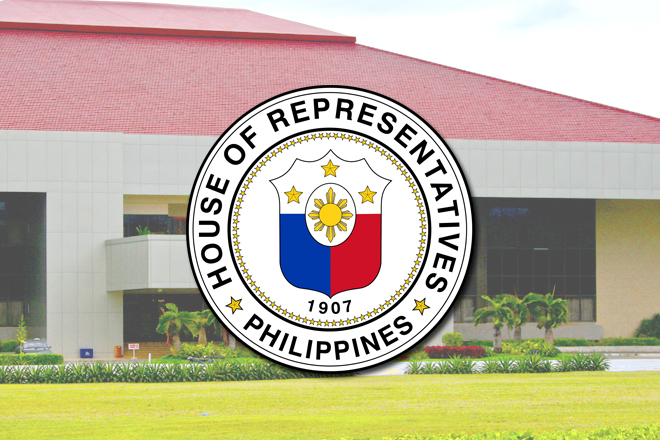House passes tariffication act on final reading
August 15, 2018
The House of Representatives, voting 200-7 with two abstentions, approved on third and final reading on Tuesday a bill which seeks to liberalize rice imports by replacing the quantitative import restrictions on rice with tariffs, and create the Rice Competitiveness Enhancement Fund.
Principally authored by Committee on Agriculture and Food chairman Jose Panganiban Jr. ANAC IP Partylist, the approved “Revised Agricultural Tariffication Act" aims to protect producers of agricultural products, ensure food security and make the agricultural sector viable and globally competitive.
The bill refers to quantitative import restrictions as non-tariff restrictions used to limit the amount of imported commodities, including discretionary import licensing and import quotas, whether qualified or absolute.
Meanwhile, it refers to tariff as a tax levied on a commodity imported from another country. It earns revenues for the government and is regarded as an instrument to promote local industries by taxing their competitors. The benefit is accorded to the local producers through the maintenance of a domestic price at a level equal to the world price, plus tariff.
The bill defines tariffication as the lifting of all existing restrictions such as import quotas or prohibitions imposed on agricultural products and replacing these restrictions with tariffs.
The bill provides that in lieu of quantitative restrictions (QRs), the maximum bound rate commitments of the Philippines under the World Trade Organization (WTO) shall be imposed on the agricultural products whose QRs shall be repealed by the proposed Act.
The president shall issue the corresponding tariffs, with the schedule of the initial and final applied rates shall not exceed the country’s WTO tariff binding commitments.
In case of shortages or abnormal price increases in agricultural products whose QRs are lifted under the Act, the president may propose to Congress revisions, modifications, or adjustments of the minimum access volume. In case Congress fails to act after 15 days from receipt of the proposal, the same shall be deemed approved.
In lieu of the QR on rice, the maximum bound rate shall be as notified by the Philippines to the WTO.
Upon effectivity of the Act, the minimum access value on rice will revert to its 2012 level at 350,000 metric tons as indicated in the country’s commitment to the WTO.
The bound rate of rice imported in the Philippines shall be : a) 40 percent MFN (Most Favored Nation) rate for importation within the 350,000 metric tons MAV from non-ASEAN WTO member countries; and b) 180 percent MFN quota tariff rate.
For imported rice originating from ASEAN Member States, the import duty rate commitments of the Philippines in the ASEAN Trade in Goods Agreement (ATIGA) shall be applied.
The bill also provides for the composition of the National Food Authority Council (NFAC) which shall be headed by Department of Agriculture secretary as chairperson and the National Food Authority Administrator as vice chairperson.
The following shall be its members: Bangko Sentral ng Pilipinas governor; Executive Secretary; secretaries of the Departments of Finance, Trade and Industry, Social Welfare and Development, Interior and Local Government, and National Economic and Development Authority; National Disaster Risk Reduction and Management Council Chairman; and two farmers’ representatives to be selected based on the guidelines to be issued by the NFAC.
The National Food Authority (NFA) shall establish rules and regulations governing the importation of rice and license, impose and collect fees and charge for said importation.
The president shall be empowered to act with full delegated authority in the adjustment of applied rate and regulation of rice imports.
The bill also provides for the creation of the Agricultural Competitiveness Enhancement Fund (ACEF) which shall be used to: 1) raise productivity of farmers and fisherfolk by providing the necessary credit to them and their cooperatives and associations, and micro and small scale enterprises, for the acquisition and establishment of production, postharvest, and processing machineries, equipment and facilities, farm inputs and improvements; 2) research and development on agricultural and fishery products of state universities and colleges; and 3) comprehensive and attractive grant-in-aid program for agriculture, forestry, fisheries, and veterinary medicine education to promote the development of agriculture and fisheries. DMS
Latest Videos
- THE UNTOLD STORY EXPERT INSIGHTS INTO THE UKRAINE
- NEGOTIATING A NEW ORDER US RUSSIA TALKS ON UKRAIN
- Ukraine: A Pawn in the Geopolitical Game? Will Trump Intervene?
- US VP VANCE CRITICIZES EUROPEAN DEMOCRACIES AT MUNICH SECURITY CONFERENCE
- UNCOVERING THE WEB OF DECEIT: CIA INFILTRATION OF THE MEDIA
- SHIFTING SANDS: TULSI GABBARD’S CONFIRMATION AND THE EVOLVING GLOBAL LANDSCAPE
- FAUCI SCANDAL: A THREAT TO GLOBAL HEALTH AND DEMOCRACY






